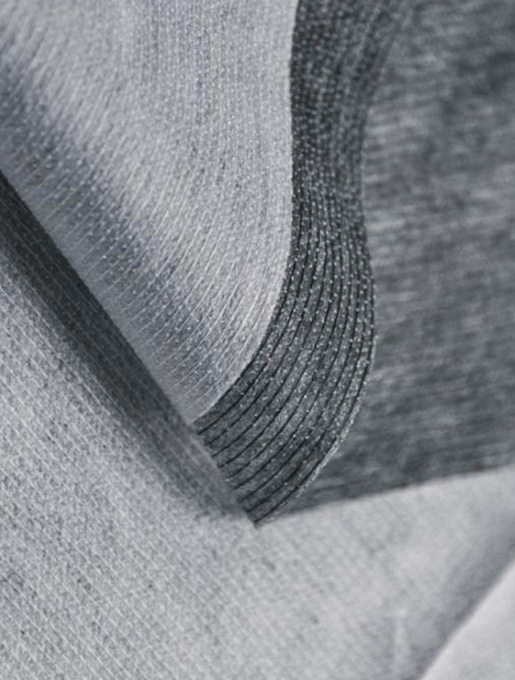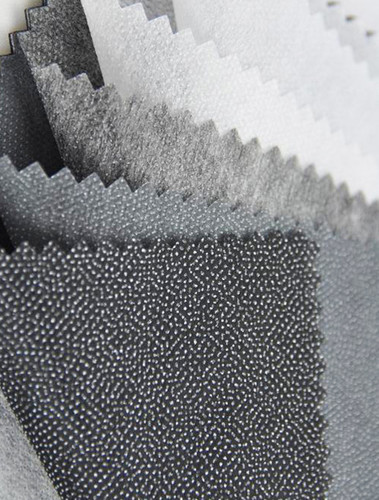I. Understanding the Foundation: What is Quilting Woven Interlining?
In the world of textile manufacturing and garment construction, Quilting Woven Interlining serves as a crucial component that bridges the gap between fabric aesthetics and functional performance. This specialized material consists of a woven base cloth that undergoes precise quilting processes to create stable, dimensionally stable layers used primarily for reinforcement and structural enhancement. Unlike non-woven alternatives, woven interlining maintains the natural drape and flexibility of fabrics while providing consistent support across the entire textile surface.
- Multi-layer Construction: Typically features three distinct layers - face fabric, batting insulation, and backing material
- Precision Quilting: Utilizes advanced stitching patterns to secure layers without compromising flexibility
- Thermal Regulation: Provides excellent insulation properties while maintaining breathability
- Structural Integrity: Enhances fabric durability without adding significant weight
A. The Manufacturing Process: From Raw Material to Finished Interlining
The production of high-quality Quilting Woven Interlining involves sophisticated manufacturing techniques that ensure consistent performance and reliability. The process begins with selecting appropriate base materials and progresses through precise quilting operations that determine the final product's characteristics and application suitability.
- Material selection based on end-use requirements and performance specifications
- Precision weaving of base cloth to ensure consistent tension and density
- Computer-controlled quilting patterns for uniform stitch distribution
- Quality verification at each production stage to maintain standards
1. Fiber Selection and Yarn Preparation
The foundation of superior Quilting Woven Interlining begins with careful fiber selection and yarn preparation. Manufacturers choose specific fiber blends and yarn constructions based on the intended application, whether for automotive interiors, fashion garments, or technical textiles.
- Natural fiber blends for enhanced breathability and comfort
- Synthetic fibers for improved durability and moisture resistance
- Specialty yarns with specific thermal or mechanical properties
- Custom fiber treatments for specialized application requirements
II. Technical Advantages: Why Choose Woven Interlining?
The technical superiority of Quilting Woven Interlining becomes evident when examining its performance characteristics compared to alternative materials. The woven structure provides inherent advantages that make it the preferred choice for applications demanding both aesthetic appeal and functional performance.
- Superior dimensional stability under stress and temperature variations
- Enhanced tear and tensile strength compared to non-woven alternatives
- Excellent recovery properties maintaining shape over extended use
- Consistent performance across different environmental conditions
A. Performance Comparison: Woven vs Non-Woven Interlining
When evaluating interlining options, understanding the fundamental differences between woven and non-woven varieties is crucial for making informed material selection decisions. The unique characteristics of Quilting Woven Interlining provide distinct advantages in specific applications.
| Performance Characteristic | Quilting Woven Interlining | Non-Woven Interlining |
| Dimensional Stability | Excellent - maintains shape under stress | Good - may stretch or distort |
| Drape and Flexibility | Superior - moves with base fabric | Moderate - can feel stiff |
| Durability | Long-lasting - withstands repeated use | Limited - may break down over time |
| Cost Efficiency | Higher initial cost, better long-term value | Lower initial cost, may require replacement |
B. Thermal and Acoustic Properties
The unique structure of Quilting Woven Interlining provides exceptional thermal regulation and acoustic damping capabilities. The quilted pattern creates air pockets that act as natural insulators while simultaneously absorbing sound vibrations, making it ideal for automotive and architectural applications.
- Consistent thermal insulation across temperature ranges
- Effective sound absorption reducing noise transmission
- Moisture management through controlled breathability
- Fire resistance options for safety-critical applications
III. Application Spectrum: Where Quilting Woven Interlining Excels
The versatility of Quilting Woven Interlining enables its use across diverse industries, from high-fashion to technical textiles. Each application leverages the material's unique properties to enhance product performance and durability while maintaining aesthetic qualities.
- Fashion and apparel for structured garments and outerwear
- Automotive interiors for seating and door panel reinforcement
- Home furnishings for upholstery and decorative elements
- Technical textiles for specialized industrial applications
A. Fashion and Apparel Applications
In the fashion industry, Quilting Woven Interlining provides the foundation for structured garments that maintain their shape while offering comfort and flexibility. Designers value its ability to add body without bulk, creating silhouettes that drape naturally while providing lasting structure.
- Jacket collars and cuffs for maintained shape and crisp appearance
- Coat fronts and lapels for enhanced drape and wind resistance
- Designer handbags and accessories for structural integrity
- Formal wear for subtle shaping and support
B. Automotive and Technical Applications
The automotive industry relies on Quilting Woven Interlining for interior components that require durability, comfort, and aesthetic consistency. The material's ability to withstand temperature variations and mechanical stress makes it ideal for demanding automotive environments.
- Seat cover reinforcement for improved wear resistance
- Headliner and pillar covers for acoustic insulation
- Door panel substrates for impact resistance and shape retention
- Trim components for consistent appearance and feel
IV. Quality Standards and Selection Criteria
Selecting the appropriate Quilting Woven Interlining requires understanding key quality parameters and performance specifications. Manufacturers and designers must consider multiple factors to ensure the chosen interlining meets both immediate needs and long-term performance expectations.
- Weight and thickness specifications for application suitability
- Compatibility with base fabrics and manufacturing processes
- Environmental resistance and durability requirements
- Regulatory compliance and certification standards
A. Key Performance Indicators
Evaluating Quilting Woven Interlining involves assessing specific performance indicators that directly impact the final product's quality and longevity. These metrics provide objective criteria for material selection and quality verification.
| Quality Parameter | Testing Method | Industry Standard |
| Tensile Strength | ASTM D5035 | Minimum 300 N/5cm |
| Dimensional Stability | AATCC 135 | ≤2% shrinkage |
| Stiffness | ASTM D4032 | Application specific |
| Thermal Resistance | ASTM D1518 | 0.05-0.25 m²K/W |
FAQ
What makes quilting woven interlining different from other types of interlining?
Quilting Woven Interlining distinguishes itself through its unique combination of woven base structure and precision quilting. Unlike fused or non-woven alternatives, it maintains fabric-like drape and flexibility while providing consistent support. The woven construction offers superior dimensional stability and durability, making it ideal for applications where both aesthetic qualities and long-term performance are crucial. The quilting process further enhances these properties by creating secure, uniform layers that resist separation and maintain integrity through repeated use and cleaning cycles.
How does quilting woven interlining improve garment durability?
Quilting Woven Interlining significantly enhances garment durability through multiple mechanisms. The woven base cloth provides excellent tear and tensile strength, while the quilting stitches distribute stress evenly across the fabric surface. This combination prevents localized wear and tear, extends the garment's lifespan, and maintains its original shape through extended use. Additionally, the interlining acts as a protective barrier, reducing abrasion on the face fabric and helping the garment withstand regular cleaning and environmental exposure without compromising its structural integrity.
Can quilting woven interlining be used in waterproof applications?
Yes, Quilting Woven Interlining can be engineered for waterproof applications through specialized treatments and construction methods. Manufacturers can apply durable water repellent (DWR) coatings or laminate waterproof membranes to create barriers while maintaining breathability. The quilting process must be carefully calibrated to ensure stitch holes don't compromise waterproof integrity, often using specialized sealing techniques or tape-backed stitching. These waterproof versions are particularly valuable in outdoor gear, protective clothing, and automotive applications where moisture resistance is essential.
What factors should be considered when selecting quilting woven interlining for automotive use?
Selecting Quilting Woven Interlining for automotive applications requires careful consideration of several critical factors. These include heat resistance to withstand vehicle interior temperatures, color fastness to prevent fading from UV exposure, flame retardancy for safety compliance, and consistent performance across varying humidity levels. The interlining must also demonstrate excellent dimensional stability to prevent sagging or distortion over time and comply with automotive industry standards for volatile organic compound (VOC) emissions and odor characteristics.
How does the weight of quilting woven interlining affect its performance?
The weight of Quilting Woven Interlining directly influences its performance characteristics and suitable applications. Lightweight interlining (under 100 g/m²) offers subtle support and maintains fabric drape for delicate garments, while medium weight (100-200 g/m²) provides balanced structure for most apparel applications. Heavyweight interlining (over 200 g/m²) delivers maximum stability and insulation for outerwear and technical applications. The optimal weight depends on the base fabric characteristics, desired end-use performance, and manufacturing requirements, with heavier weights generally offering greater durability and thermal properties.


 English
English Español
Español Türk
Türk 简体中文
简体中文









